What are the types of geogrids and their uses?
Geogrids, a subclass of geosynthetics, are synthetic materials used in civil engineering for improving soil stability, reinforcing structures, and facilitating drainage. For certain uses, these mesh-like structures, made of polymers like polyester, polypropylene, or polyethylene, provide versatile strength and stability. When combined with the proper infill, geogrids, with interconnected tensile ribs, reinforce and stabilize by locking with underlying soil or aggregate. Geogrids are essential for stabilizing soft ground, increasing pavement durability, and reducing road thickness while maintaining strength. Geogrids are widely used in heavy-load and civil engineering projects such as retaining walls, highways, slopes, embankments, and erosion control, and even in agriculture. Geogrids exhibit remarkable tensile strength, comparable in certain applications to steel and concrete.
What are the different types of geogrids?
Geogrids materials are specifically designed for civil engineering needs and are available in different types. Most commonly geogrids are divided into two categories:
- Based on patterns
- Based on manufacturing.
Let’s look at them based on their patterns, how they are made, and what materials are used.
Types of geogrids based on pattern:
1. Uniaxial geogrids- Uniaxial geogrids made of polyethylene or polypropylene have high tensile strength in one direction, ideal for supporting heavy loads. StrataGrid from Strata Geosystems are widely used in embankments, retaining walls, and landfill liners constructed on unstable soil or steep slopes. It is ideal for reinforcing slopes and walls due to its uniaxial strength. Uniaxial geogrids improve load distribution, which helps mitigate soil erosion. Because they are eco-friendly, they improve stability and safety and add to the sustainability of building projects. Uniaxial geogrids, which come in different grades, offer customized solutions for a range of infrastructure requirements. StrataGrid uniaxial (SGU) geogrid is an innovative geogrid that serves as a highly efficient soil reinforcement solution.
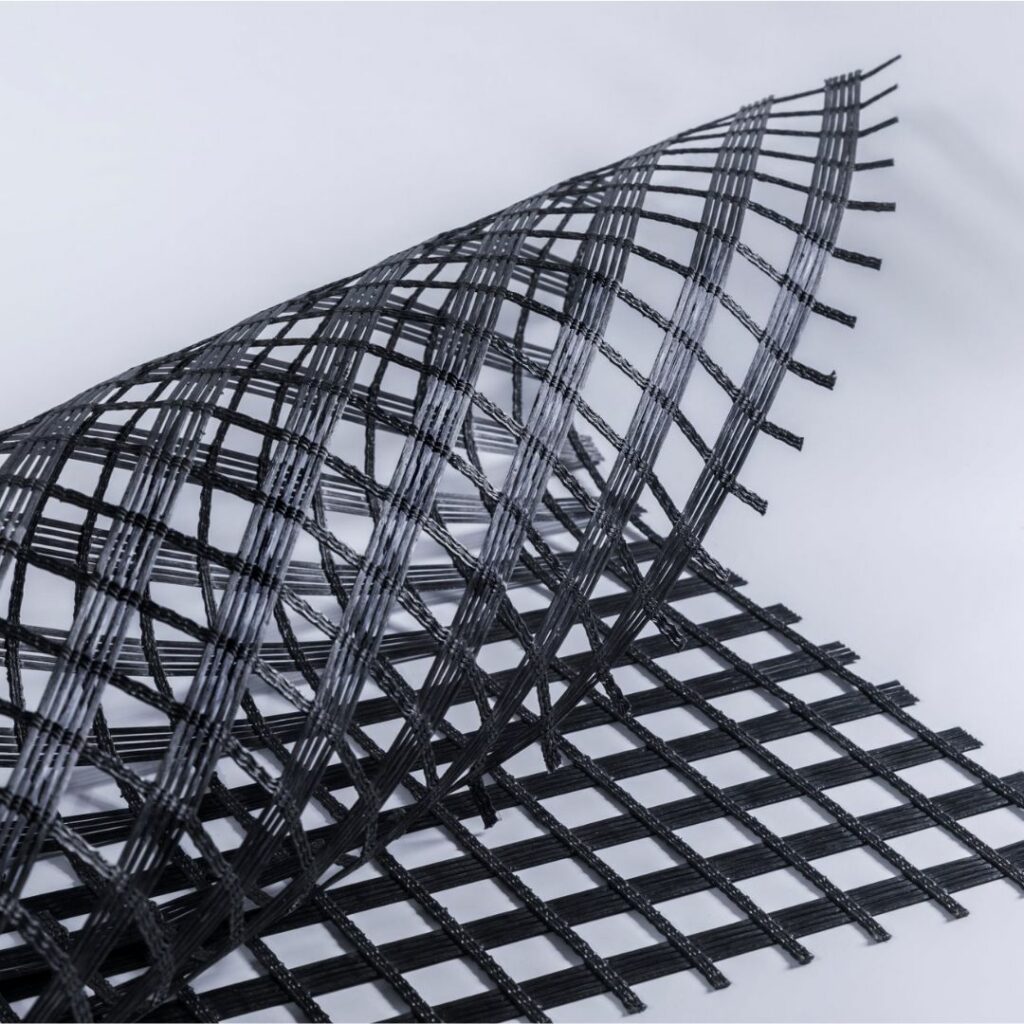
Main features of this geogrid which makes it different from other geogrids are:
- StrataGrid is crafted from high-quality polyester yarn with exceptional strength and tenacity. The HT yarn is made from PET polymer having varied characteristics such as high molecular weight (>25000 g/ mol), low CEG number less than 30 and low creep.
- A UV stabilized unique Polymer Modified Bituminous (PMB) coating provides excellent environmental, chemical and mechanical properties.
- Its design minimizes thermal exposure to PET fibers, preventing polymer degradation and ensuring low elongation for optimal performance.
- Available in strengths ranging upto 800 kN/m and a width of 5.7 m.
- Strata process ensures superior quality, consistency and dimensional stability
- StrataGrid is ISO 9001-2008 certified.
2. Biaxial geogrids- Biaxial geogrids like StrataGrid biaxial (SGB) from Strata Geosystems are adaptable materials with similar strength in both directions. They are therefore perfect for managing pressures from different perspectives. Applications for them include slope protection, wall reinforcement, embankment support, subgrade reinforcement, soil stabilization, and foundation reinforcement. These geogrids stop soil erosion and increase the durability of the subgrade. They can be customized in width, length, and aperture measurements to meet the needs of a given project.
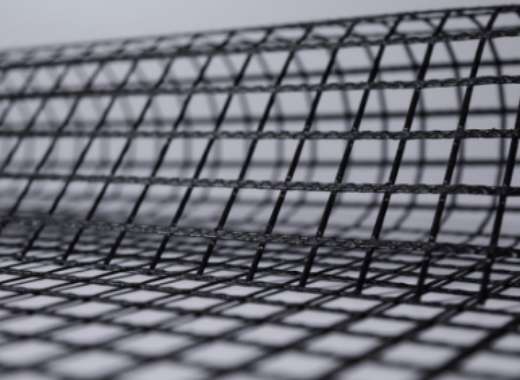
What makes StrataGrid™ biaxial (SGB) unique?
The key features of StrataGrid biaxial (SGB) include:
- Exceptional tensile resistance at lower elongations, surpassing conventional solutions in the market.
- Available in strengths ranging from 20kN/m to 150kN/m and a width of 5m, providing superior reinforcement for pavement base layers.
- Reduces pavement crust thickness, leading to faster and more efficient construction processes.
- Enhances structural integrity, mitigates settlement issues, and prevents soil failure, providing a solid foundation for embankments.
- Contributes to sustainability efforts by decreasing the carbon footprint associated with pavement construction.
Types of geogrids based on manufacturing:
1. Extruded geogrids- Extruded geogrids are created by stretching polypropylene sheets, producing high strength and stiffness in the elongated direction. They vary in strength and stiffness based on the size and shape of their openings and ribs. Geogrids create a strong base layer that distributes weight evenly, reducing stresses and improving load-bearing capacity. Their rigid ribs and thick walls lock aggregate materials, increasing resistance to sliding and movement. Extruded geogrids are available in uniaxial or biaxial forms, and they are used for railway trackbed stabilization, basal reinforcement of embankments, bridge and railway abutments, retaining walls, reinforced soil slopes, reinforced foundation over piles, and reinforcement of granular road base and sub-base.
2. Woven geogrids- Woven geogrids are manufactured by weaving together polypropylene coated polyester fibers into longitudinal and transverse ribs and joining the crossovers by nodes. These geogrids are clothlike, with visible threads woven in horizontal and vertical directions, making them ideal for projects related to drainage, soil reinforcement, and erosion control. They are used to enhance subgrade conditions and minimize the quantity of aggregate. Woven geogrids are commonly made of polymer materials such as polyester, polyvinyl alcohol, polyethylene, or polypropylene. They are used as an alternative to traditional geogrids and have various applications in civil engineering and construction projects.
3. Bonded Geogrids- Bonded geogrids are created by joining strands at right angles and coating them with plastic. They are like a grid or net with threads running both horizontally and vertically. These geogrids play an essential role in modern geotechnics and construction. They stabilize soft or unstable substrates and reinforce the subgrade, improving load distribution and increasing the soil’s load-bearing capacity.
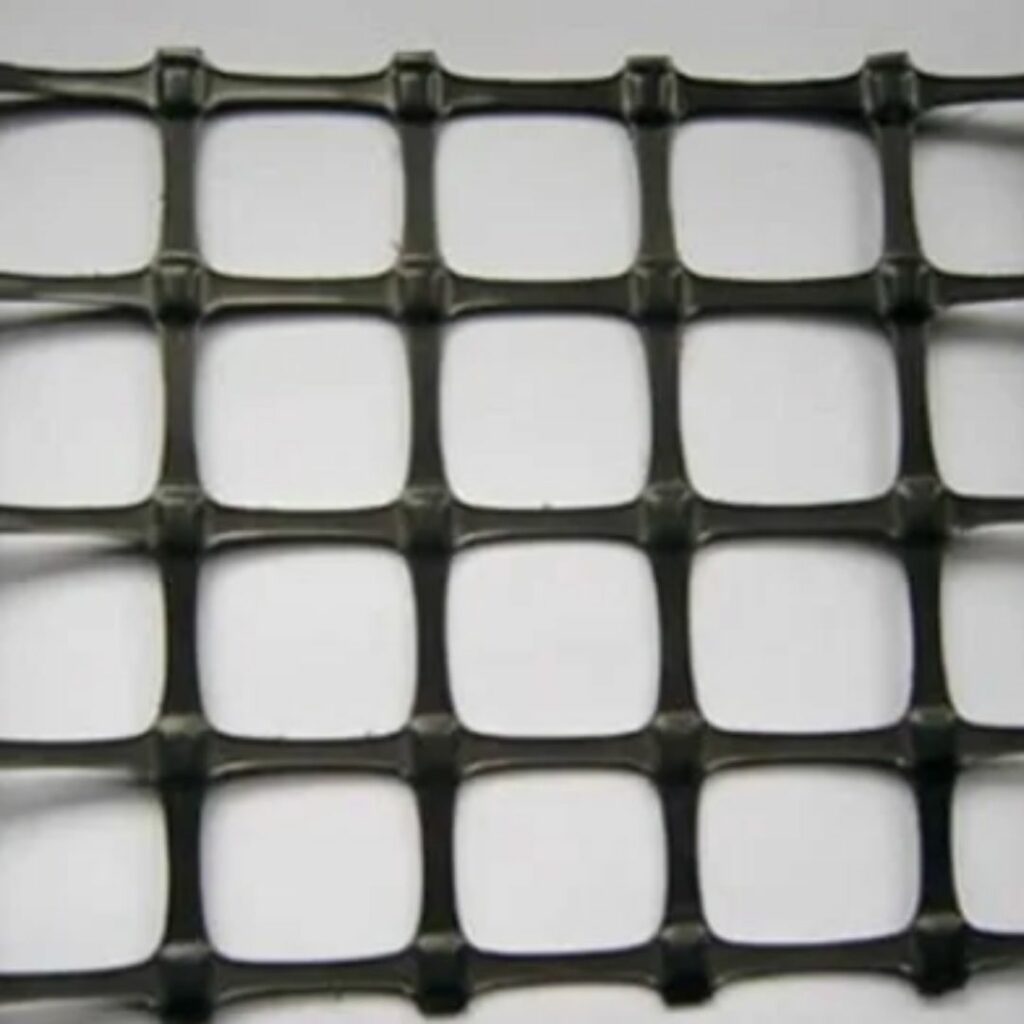
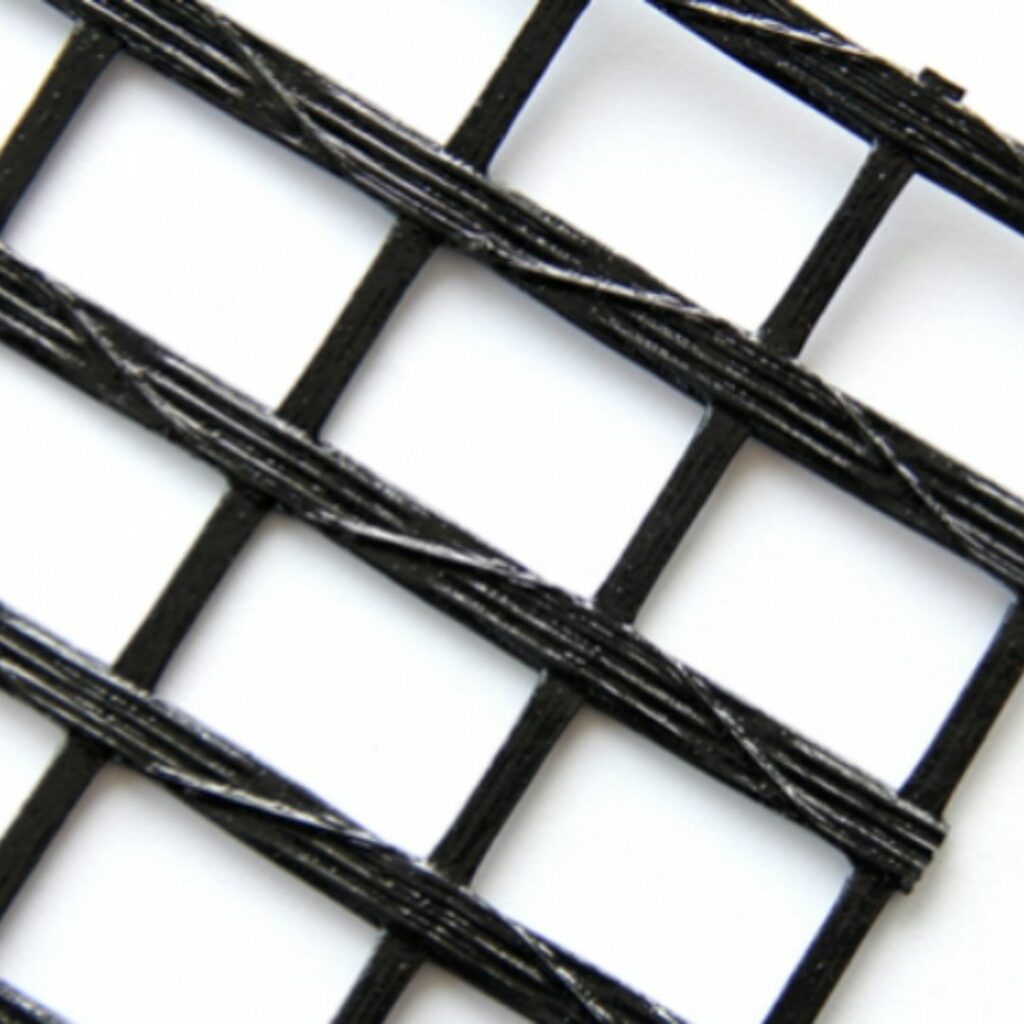
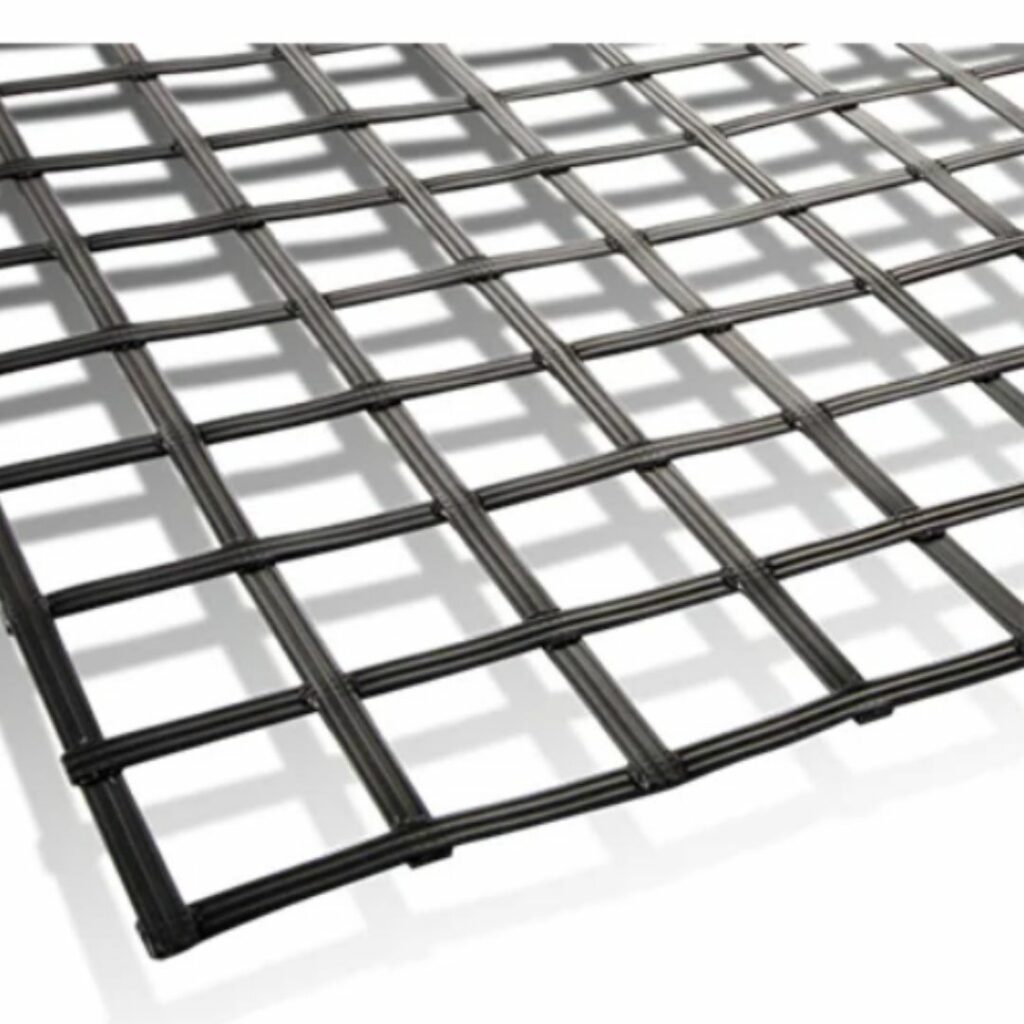
Knowing the different types of geogrids is crucial for tackling soil stabilization and reinforcement tasks effectively. From traditional woven and knitted variants to innovative geocomposites and eco-friendly options, each type offers distinct advantages. Strata Geosystems provides reliable results for soil stabilization, earth retention, and soil erosion control projects occupying geotextile and geogrids, earth anchors, walls and slopes, turf reinforcement, revegetation, containment, and more. With our expertise in manufacturing top-quality geogrids since 2004, backed by cutting-edge technology and a commitment to sustainability, we empower you to achieve superior performance and longevity in civil engineering projects.
